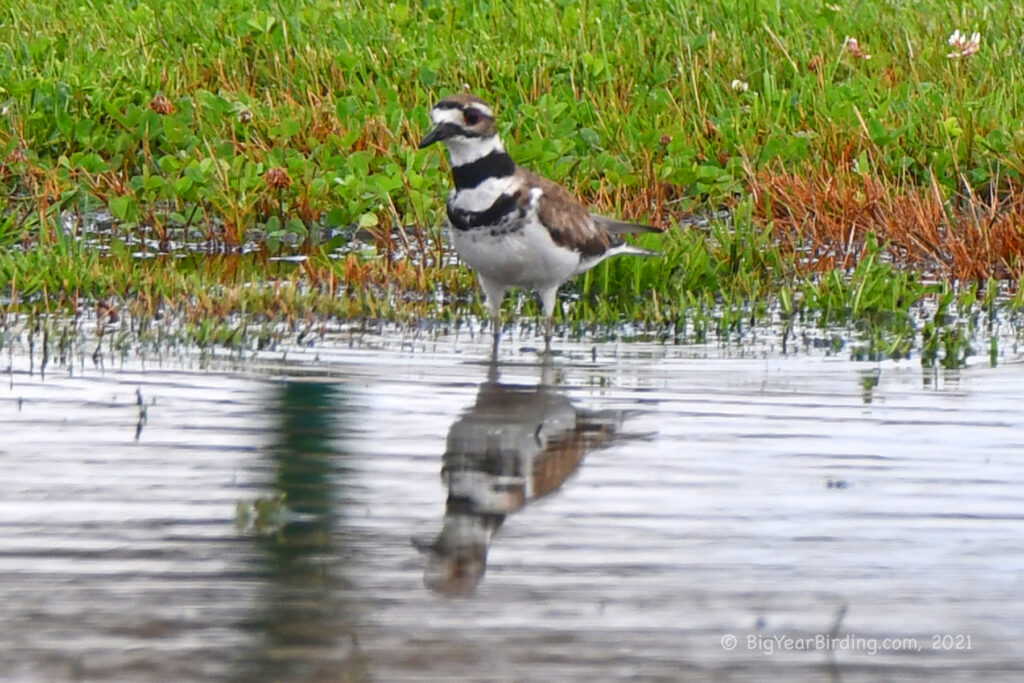
The Killdeer (Charadrius vociferus) is a medium-sized shorebird that inhabits grasslands, fields, and shores throughout North and South America. They measure around 9 to 11 inches in length and have a wingspan of approximately 23 inches. They weigh around 2.8 to 3.5 ounces. The Killdeer has a distinctive appearance with its brown upperparts and white underparts. They have two black bands around their necks and a black band across their breast. The Killdeer has a red eye-ring, and their bill is black.

The Killdeer is known for its loud, distinctive call, which sounds like “kill-dee kill-dee.” They are also known for their broken-wing display, which they use to lure predators away from their nests. During breeding season, Killdeer lay their eggs in a shallow depression on the ground, which they often disguise with pebbles or debris. They may have up to two broods per year.
Killdeer are migratory birds, with populations breeding in North America and wintering in the southern United States, Mexico, Central America, and the Caribbean. They migrate in flocks, sometimes with other shorebird species, and often stopover at coastal areas or wetlands during their journey.
In addition to their distinctive appearance and vocalizations, Killdeer are also known for their behavior. They are often seen running along the ground, stopping abruptly to feed on insects and other small invertebrates. They have a unique feeding technique, which involves stamping their feet on the ground to flush out prey.

The Killdeer is a widespread and adaptable species that can be found in a variety of habitats. Despite their success, they face threats from habitat loss and degradation, as well as predation from domestic and feral animals. Conservation efforts, such as habitat restoration and predator control, can help protect this unique and valuable species.

